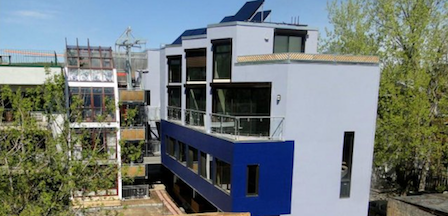Published on

This article is retrieved from the Ecohome: Resources for Sustainable Housing website, precisely the Green Home Guide (a step-by-step guide to sustainable and healthy housing whether you are building, renovating or maintaining a home). Consult the original article here.
--------------------------------
A green home doesn’t always cost more to build, but always costs less to operate. A healthy efficient home saves money, reduces your carbon footprint and improves your quality of life.
LOHAS (Lifestyle of Health and Sustainability) is a term quickly growing in recognition, just as it is growing as a demographic. As society becomes more aware of the global issues we face and the potential consequences, people are becoming more determined to reduce their carbon footprint.
Housing is an enormous source of carbon emissions, so it is also a place where we have tremendous room for improvement. This building guide will walk you through the steps than can help you minimize your personal emissions as much as possible, whether you are building, buying or renting. Keep in mind, this is not a sacrifice you are making. A green home usually translates into financial savings and improved quality of life. And it all starts with a home of a reasonable size, in a reasonable location.
What does a "reasonable location" mean?
Being close to the services you need. Grocery stores, banks, pharmacies, place of work and even places of recreation. In terms of ‘going green’, all your efforts to reduce the ecological footprint of your home can be instantly negated by locating it far from the places you need to go and public transportation, as you will spend a lot of time in a car.
Transportation fuel makes up a much greater part of our carbon emissions than a lot of people might think, consequently home location is one one of the biggest variables in your personal carbon footprint.
What does a "reasonable size" mean?
Canadians on average have a living space of 700 square feet per person, a number that has quadrupled in a generation. Not long ago houses were half the size, while families were twice the size or more. Bringing down our square footage per person is crucial to sustainable housing.
So it’s time to rethink home design, and bring it in line with current environmental and population realities. Don't panic, living green doesn't have to be a painful sacrifice, in fact it can quite enjoyable. What we want to show you is that a well-designed, open and versatile space can feel bigger than it really is, and be much more affordable to build and operate.
If you are afraid to limit your home size in case your living situation changes, you can simply make your home ready for change. Even in the city, you can build a "flexible" home, which has been designed for quicker and easier expansions and changes. Take a look at our page on flexible housing.





